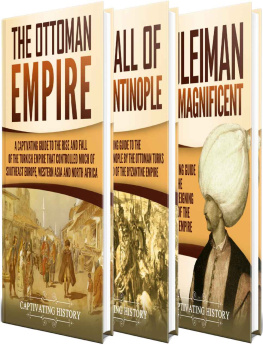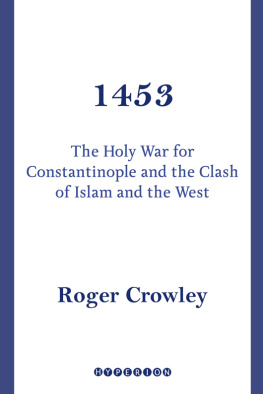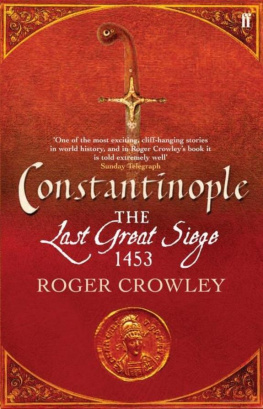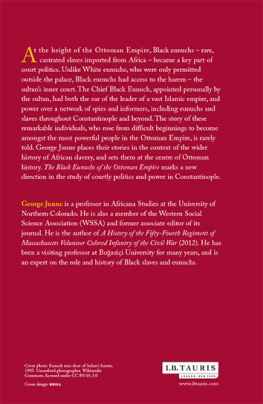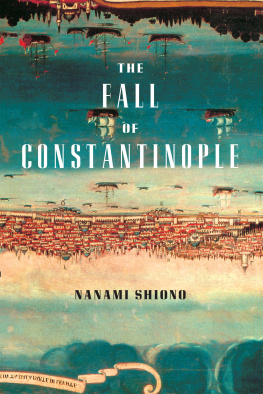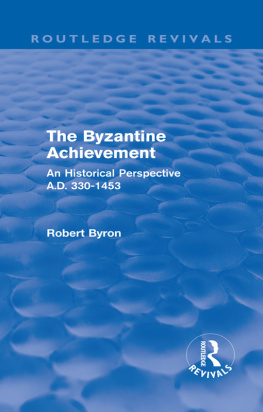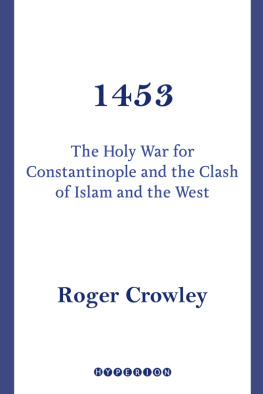The Fall of Constantinople to the Ottomans
Turning Points Series List
General Editor: Keith Robbins
Vice-Chancellor Emeritus, University of Wales Lampeter
THE END OF THE OTTOMAN EMPIRE, 19081923
A.L. Macfie
THE PARIS COMMUNE 1871
Robert Tombs
THE BOMB
D.B.G. Heuser
THE FALL OF FRANCE, 1940
Andrew Shennan
THE GREAT TREKS
Norman Etherington
THE OIL CRISIS
Fiona Venn
GERMANY 1989
Lothar Kettenacker
ENDING APARTHEID
David Welsh and J.E. Spence
THE FALL OF CONSTANTINOPLE TO THE OTTOMANS: CONTEXT AND CONSEQUENCES
Michael Angold
The Fall of Constantinople to the Ottomans
Context and Consequences
Michael Angold

First published 2012 by Pearson Education Limited
Published 2014 by Routledge
2 Park Square, Milton Park, Abingdon, Oxon OX14 4RN
711 Third Avenue, New York, NY 10017, USA
Routledge is an imprint of the Taylor & Francis Group, an informa business
Copyright 2012, Taylor & Francis.
The right of Michael Angold to be identified as author of this work has been asserted by him in accordance with the Copyright, Designs and Patents Act 1988.
All rights reserved. No part of this book may be reprinted or reproduced or utilised in any form or by any electronic, mechanical, or other means, now known or hereafter invented, including photocopying and recording, or in any information storage or retrieval system, without permission in writing from the publishers.
Notices
Knowledge and best practice in this field are constantly changing. As new research and experience broaden our understanding, changes in research methods, professional practices, or medical treatment may become necessary.
Practitioners and researchers must always rely on their own experience and knowledge in evaluating and using any information, methods, compounds, or experiments described herein. In using such information or methods they should be mindful of their own safety and the safety of others, including parties for whom they have a professional responsibility.
To the fullest extent of the law, neither the Publisher nor the authors, contributors, or editors, assume any liability for any injury and/or damage to persons or property as a matter of products liability, negligence or otherwise, or from any use or operation of any methods, products, instructions, or ideas contained in the material herein.
ISBN 13: 978-0-582-35612-2 (pbk)
British Library Cataloguing in Publication Data
A CIP catalogue record for this book can be obtained from the British Library
Library of Congress Cataloging in Publication Data
Angold, Michael
The fall of Constantinople to the Ottomans : context and consequences / Michael Angold.
p. cm.
Includes bibliographical references and index.
ISBN 978-0-582-35612-2 (pbk.)
1. Istanbul (Turkey)--History--Siege, 1453. 2. Byzantine Empire--History--Constantine XI Dragases, 1448-1453. I. Title.
DF649.A64 2012
939.8618--dc23
2012012655
Set in 9/13.5pt Stone serif by 35
Contents
T he fall of Constantinople to the Ottomans in 1453 presents similar problems to those I encountered when writing about its previous fall in 1204 to the Venetians and the soldiers of the fourth crusade.Constantinople in 1261. If this did not mean a return to political ascendancy, it did produce a sustained intellectual and spiritual revival, which did much to preserve Constantinoples prestige and symbolic importance. Nothing like this happened after 1453. What was the point in seeking to reverse what was deemed inevitable! Little effort was made to preserve Byzantine civilisation. Hopes of a Byzantine recovery remained in the realm of myth and fantasy. Despite the political weakness of the declining Byzantine Empire its disappearance created a void, which was quickly filled, as others appropriated different facets of Byzantium. Its role as the guardian of classical antiquity went to the West; the Ottomans assumed its imperial destiny, while the Russians reshaped its political ideology. The final fall of Constantinople therefore became a central point of reference for a complicated process of creating identities and ideologies to fit new realities. Whether it was the Greek search for a new identity now that they were condemned to live as exiles in their own land; whether it was the transmutation of the notion of Christendom into Europe, as happened in the West; whether it was the emergence of the autocratic authority of the Czar at the heart of Holy Russia; or whether it was the elevation of the Ottoman Empire to the rank of a world power, all were set in relief by the conquest of Constantinople, whence the attention it attracted among contemporaries. Herein lies its real historical importance.
Writing this book has taken much longer than I expected; much longer than it should have, but without Simin Abrahamss help and encouragement I dont think I would ever have been able to finish this book.
Notes
M.J. Angold, The Fourth Crusade: Event and Context (Harlow: Pearson/Longman, 2003).
S. Runciman, The Fall of Constantinople, 1453 (Cambridge: Cambridge University Press, 1965).
T he fall of Constantinople is a story that has often been told. It is Sir Steven Runciman who tells the story best in his Fall of Constantinople 1453, which is a consummate example of history as narrative, but even he was beginning to wonder whether the topic merited another book. It is not my intention to provide yet another narrative or to attempt another reconstruction. The focus of my interest will be on the historical significance of the fall of Constantinople to the Ottomans. Was it one of historys turning points? Such an approach will necessarily highlight its prehistory and its consequences, at the expense of the event itself. But it makes little sense to write about the fall of Constantinople without first providing a brief sketch of those desperate days in April and May 1453.
I
The decision taken by the young Sultan Mehmed II (145181) to embark on the conquest of Constantinople represented the failure of political arrangements, which for fifty years had allowed Byzantium to survive and to His advice prevailed, but it would come back to haunt him, when in 1444 diplomacy failed to protect Ottoman territories from Hungarian invasion. It strengthened his opponents demand for the conquest of Constantinople.
The question of Constantinople was therefore an issue which polarised opinion at the Ottoman court in the last years of Murad IIs reign. Alarmed by the activities of Mehmed IIs government, andarli Halil Pasha persuaded Murad II to resume the reins of power in 1446 and to exile his son to Asia Minor. While Murad II lived the question of what to do with Constantinople was put on hold. He was all too aware how radically its conquest would alter the character of the Ottoman Empire. For his son it was another matter. He was in a weak position. His first short reign had damaged his reputation. Once he finally succeeded to the throne in 1451 on the death of his father, he needed to assert himself against an over-mighty Grand Vezir and to unite Ottoman political society behind him in some grand enterprise. The conquest of Constantinople beckoned.
A change of ruler is always a moment of uncertainty, but Mehmed II was not the only new ruler. In 1448 the Byzantine Emperor John VIII Palaiologos (142548) died. His reputation for good or ill hangs on his decision to press ahead with the union of the Latin and Orthodox Churches, which he pushed through in 1439 with great skill and determination at the Council of Ferrara Florence. He hoped that diplomatic success would strengthen Byzantium, which in the short term it appeared to do. He did not live to face further developments. Instead he left an uncertain succession, for which he had made no formal provisions. It was understood that his oldest surviving brother Constantine Drageses would succeed, but the latter was at Mistra in the Peloponnese at some distance from Constantinople. This allowed supporters of his younger brother Demetrios to plot a
Next page


